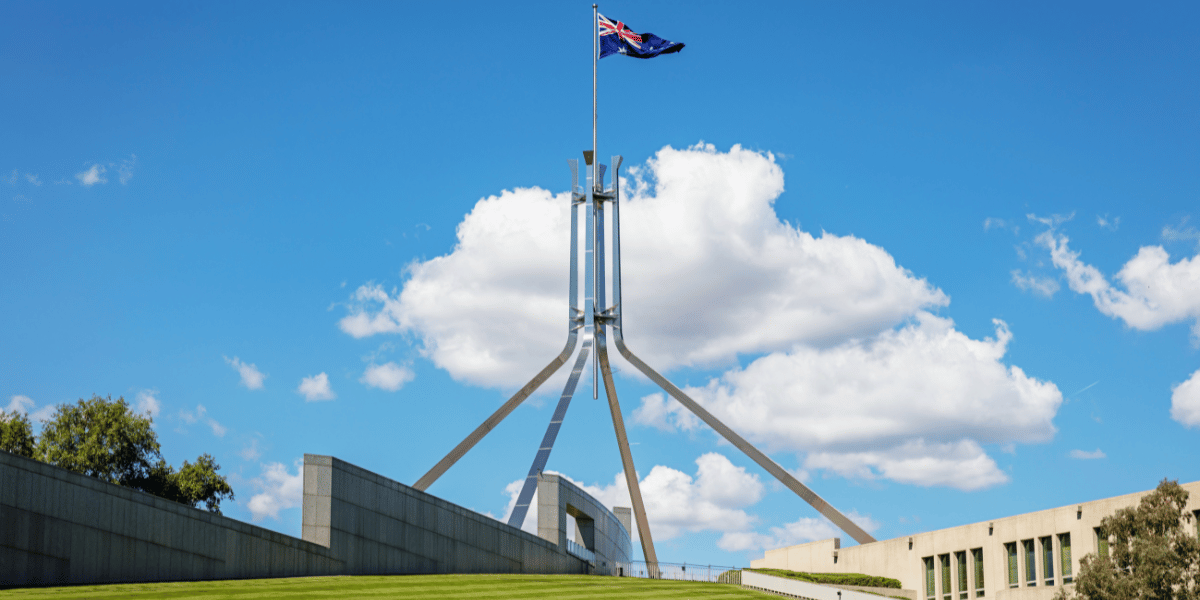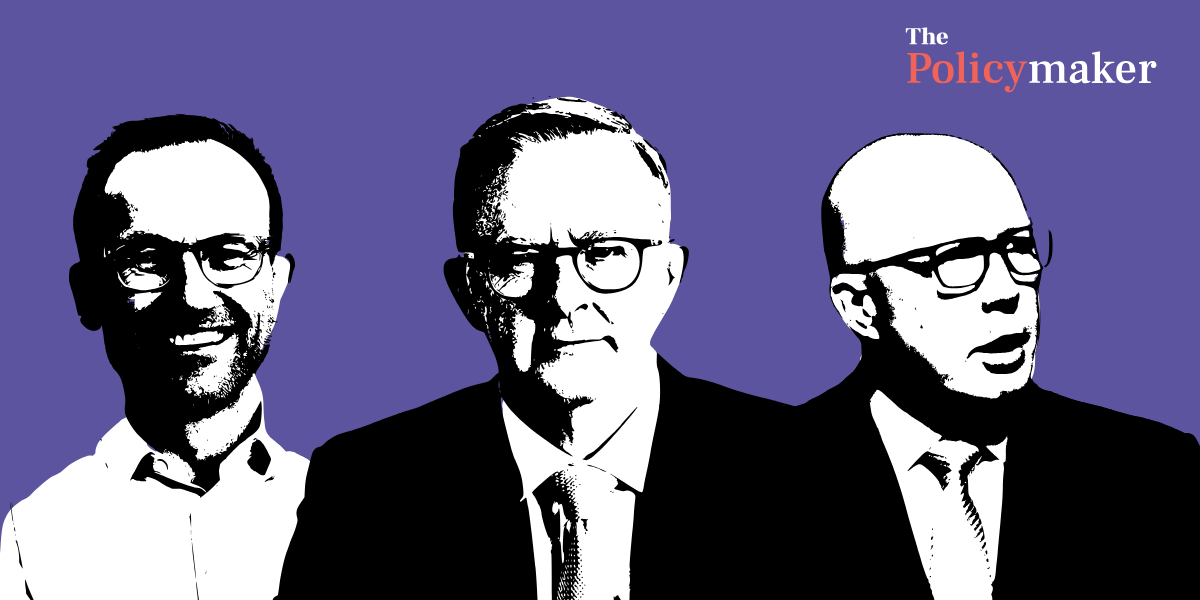The NSW Anti-slavery Commissioner explains why it’s in everyone’s interests to tackle modern slavery and human trafficking as a system-level challenge.
Google “modern slavery” or “human trafficking” and click on the images tab—you will be confronted by a sea of black and white and red. You will see hands bound, pictures of unidentifiable women and children, often with their heads bowed in shame, perhaps even branded with a barcode—images designed to shock and outrage.
In this narrative, survivors are not treated as people with voices of their own, but instead as tropes, resources exploited in service of a good story. Beyond clickbait, these stories reflect a growing numbness to these kind of hyperbolic messages and images, and speak to a broader risk that we come to tolerate and resign ourselves to modern slavery and human trafficking.
As Professor Jennifer Burn sets out in her recent piece for this series in The Policymaker, an estimated 50 million people globally are victims of modern slavery, with somewhere between 1,500 and 15,000 of them in Australia.
Why does slavery endure? Why do we tolerate it?
Because it enriches some and makes goods cheap for others. Because it’s hard to find and harder to prosecute. Because it’s hidden from the view and consciousness of the public and policymakers.
Modern slavery is a system failure.
Yet a system that tolerates modern slavery not only harms victims—it actually leaves us all worse off.
Using research from the UK Home Office, we can estimate the resulting cost: here in Australia, it is likely to be at least $875 million. International Monetary Fund researchers found that ending child marriage would add on average 1.05 per cent to a country’s GDP. And another analysis by Project Paradigm in the National Project to Address Child Sexual Exploitation suggests that for every dollar spent on preventing child sexual exploitation there is a $16.75 return.
But modern slavery is also a system failure in another sense: a failure to spot vulnerability and prevent it becoming victimisation.
We know people interact with our systems of care and justice during the process of victimisation—the immigration system, the family and social services system, the financial system, the legal system and even the public procurement system.
Yet these systems largely fail to identify the hallmarks of vulnerability and fail to intervene to prevent vulnerability becoming victimisation.
This failure of prevention ultimately leaves us all worse off. We know from deep research overseas that human trafficking and slavery create ten measurable drags on economic and social development:
- reducing productivity across the economy;
- breeding poverty;
- entrenching inequality;
- weakening economic multipliers;
- discouraging innovation and competition;
- distorting capital markets (leading to mispricing of assets);
- weakening both the fiscal position and governance;
- encouraging corruption; and
- increasing environmental harm.
Yet this also means that progress on anti-slavery can generate welfare gains. It can increase productivity, reduce inequality, reduce poverty, improve governance, improve the fiscal position, protect capital markets, reduce corruption and even help the environment.
So, what does this welfare-maximising approach look like in practice?
It requires embedding anti-slavery across our public policy initiatives and programming. It means addressing system failure by adjusting the whole system to embed and promote anti-slavery outcomes that will leave us all better off.
We are fortunate in NSW to have our own state-based legislation in the Modern Slavery Act 2018 (NSW). It gives us the tools to create a framework for collective action—by government, business, unions, civil society, the academy and survivors—to tackle modern slavery. At its heart, this legislation—which established my role—is about improving the system. It is about making sure the system is built to deliver positive outcomes for people.
The Act tasks me to work with the NSW public procurement system to remove products of modern slavery from government and local council procurement. It creates a new public register for entities not meeting their obligations, a framework for issuing codes of practice to address modern slavery risks in private sector supply-chains, and calls for cooperation to strengthen identification and support of victims of modern slavery.
I am working with the NSW Procurement Board to establish a shared implementation framework aligned with the Commonwealth National Action Plan and Australia’s international commitments under the UN Guiding Principles on Business and Human Rights and the OECD Guidelines for Multinational Enterprises. This framework will include materials, guidance and training. And I have begun signalling to NSW Government entities where products are at high risk of being made with modern slavery, such as Xinjiang cotton and solar products, or certain healthcare products.
Given that NSW is the seventh largest economy in Asia, and the NSW Government is the second largest procurer in the Australian economy, this is a big opportunity to promote anti-slavery along a range of value-chains. The changes we make in this part of our system—public procurement, industry practice and capital market arrangements—could have a significant impact on market behaviour across the region.
The Act, and all of these changes, position NSW at the leading edge of incorporating modern slavery risk into responsible investing and sustainable finance, both through public and private sector action. And it gives us the opportunity to figure out and scale up what is working, so that we have a clearer picture of who is at risk, how we can identify, reach and assist them, and how we can make all these systems work for people. It has put us on a path to becoming a global centre of excellence in the fight against modern slavery.
I have also opened a dialogue with NSW Health about how to ensure their clinical, diagnostic, treatment and public health systems identify signs of modern slavery and provide people the trauma-informed care they need. My office is working with public and private investors and a major global tech company to figure out if we can give capital markets reliable, cheap access to firm-level modern slavery risk estimates, so that investors have no excuse for not pricing modern slavery risks into their decision-making. And I have commenced discussion with industry about the power I am afforded by the Modern Slavery Act 2018 (NSW) to issue “codes of practice”.
Under the Act I am also obliged to develop a strategic plan. As part of the consultation process to feed into that plan, since August I’ve met face to face with over 2,000 people around NSW, including whistleblowers, experts, and survivors hailing from Sydney to Xinjiang. With the support of the James Martin Institute, we have convened four expert workshops, considering the role of service providers, the criminal justice system, supply-chain and investment actors, and partnerships with civil society, business, communications and research organisations. And we have run a public consultation through the NSW government portal, Have Your Say.
In thinking about how we can foster excellence, we also need to be aware of the challenges. Three such challenges have stood out to me in my short time in the role: ambition, resourcing and survivor leadership.
First, the question of ambition. Do we have a clear strategy for creating the buy-in needed for truly systemic change? We are not talking here about changing a niche “anti-slavery” system. The goal is much more ambitious than that. It’s much more like the goal of decarbonising the economy. Both anti-slavery and climate action require changing the whole system to stop it producing unintended negative externalities. It has taken time to move climate action from the margin to the mainstream. How are we going to do that for anti-slavery? Are we serious about that ambition?
Second, we need to be honest that we face a challenging fiscal environment. That means we need to be creative in resourcing this work. Yes, that means that the anti-slavery sector needs clear, longer-term funding support from government. But we also need to think about how we can unlock other resources, for example through partnerships with corporate Australia, philanthropy and more innovative mechanisms such as sustainable finance. Necessity is the parent of invention.
Third, and finally, because we are all so used to the status quo, we also face a challenge in imagining what a different system might look like, once we change the system.
For me, survivor agency would be at the heart of that differentiation. Instead of survivors being storytelling resources exploited in an attempt to unlock public sympathy—or even funding—survivors would have agency within and over the system. Survivor leadership does not mean survivors always have to be the voice, or the face, of the system—though this can be incredibly powerful. It means they shape and influence the system, sometimes “leading from behind”.
The system-level shift being contemplated here is not just an institutional one, but in a sense also a cultural one. It means moving away from media narratives that treat modern slavery and human trafficking as rare, morally outrageous practices whose costs fall on victim groups that are subtly “‘othered’. It means making clear that modern slavery actually imposes real economic and social costs on us all—and involves us all, through our consumption, investment and other behaviours. It means committing to anti-slavery as an investment in a future that leaves us all better off.
This is a different anti-slavery story, but one that urgently needs telling.
Dr James Cockayne is the inaugural NSW Anti-slavery Commissioner. He previously founded Finance Against Slavery and Trafficking, chaired the US Council on Foreign Relations study group on trafficking in persons, and set up the UN’s anti-slavery knowledge platform, Delta 8.7.
The James Martin Institute for Public Policy, in partnership with the Office of the NSW Anti-slavery Commissioner, is convening a series of expert workshops bringing together policymakers, academics and practitioners to discuss challenges and identify opportunities for an effective approach to combat modern slavery, to support the development of the NSW Anti-slavery Commissioner’s first Strategic Plan. This article is one in a series from workshop participants.
Image credit: Pixabay












